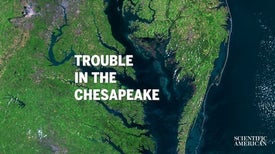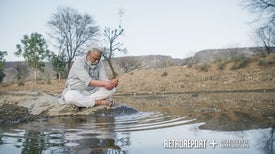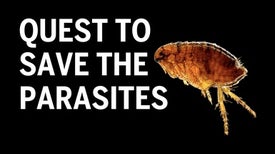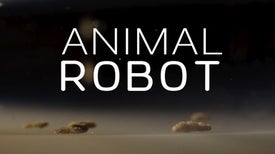CHRIS LOWE: I'm out here with my team and we're doing surveys for sharks. So we're using drones to fly along the beach to look for sharks that we see close to shore.
And if we see them from the video we can use that to estimate their size and determine what species. Most of the sharks that we see here are juvenile white sharks. And we believe this is a really good nursery habitat for them.
My name's Chris Lowe. I'm a professor of Marine biology and the director of the Shark Lab at Cal State Long Beach.
We're at mid-June. We're not even quite to summer yet. And we're already seeing a lot of activity, more than we've seen in some of the past year.
This new project that we've embarked on is a survey study where we’re shooting video transects along the beach. So the goal is to come up with what we'd call an encounter assessment.
Who is most likely to encounter sharks and under what conditions? And then we can also use that same video footage to look at how sharks behave when they're in close proximity to people.
Are sharks attacking aggressively? Are they attracted to people? Are they repelled by people or do they just ignore people?
We have hours of footage of people in the water, surfing, swimming, sharks, swimming, right by them sometimes right underneath them and completely ignoring them. They don't change their speed. They don't change their heading. They don’t turn around and come back. So when we show that video footage to people, they're astounded because it doesn't match what they think of as encountering a shark.
So we're right in the middle of a two-year study, and hopefully, by the end of this study, we'll be able to answer those questions. We can measure where sharks are in proximity to the wave break in the shoreline and to other people. So the goal is to be able to use this information, to predict where people might most likely encounter sharks, just using environmental conditions that we can predict in advance.
One of the challenges of doing a large scale study like this is you end up with hundreds of hours of video footage that somebody would have to screen through. So by working with engineers and computer scientists, we're developing machine learning algorithms that will go through and identify surfers, stand up paddle, boarders, boogie, boarders, swimmers, waders, and then the software will automatically identify those and then measure their distance to the wave break into the shoreline.
To my knowledge, this has never been done at this scale. So if we can develop those predictive models here, the goal should be, we can do this anywhere on the planet.
We've been studying juvenile white sharks in Southern California for about 15 years now.
We've tagged over 80 sharks right now that have active transmitters. We have listening stations all along the shoreline from Santa Barbara, all the way down to San Diego and all around the offshore islands. So anytime the tagged shark swims within 300 yards of one of our underwater receivers, the receiver will log the time, the date and the ID number. And then all the lifeguards who are our partners can become subscribers to that alert system. So they'll get text alerts or they'll get email alerts. And then they will use that information at their own discretion to decide whether they want to pull people out of the water or not.
We also have an autonomous underwater robot that we use to characterize the water column around these beaches, where we know the sharks are hanging out. The robots also have video cameras on them. So as they're moving up and down through the water, we're videotaping the seafloor, what's in the water column. There's also on there on the robot a receiver. So it's listening for tagged sharks while it's swimming, along doing its transects.
So this new technology coupled with our aerial surveillance, coupled with our tagging is doing something nobody else has ever done before. And giving us really high-resolution information about why these sharks are here at this beach and not that beach and not that beach. So the idea there is maybe with enough data, we'll be able to predict why they're here and where are they going to be next.








